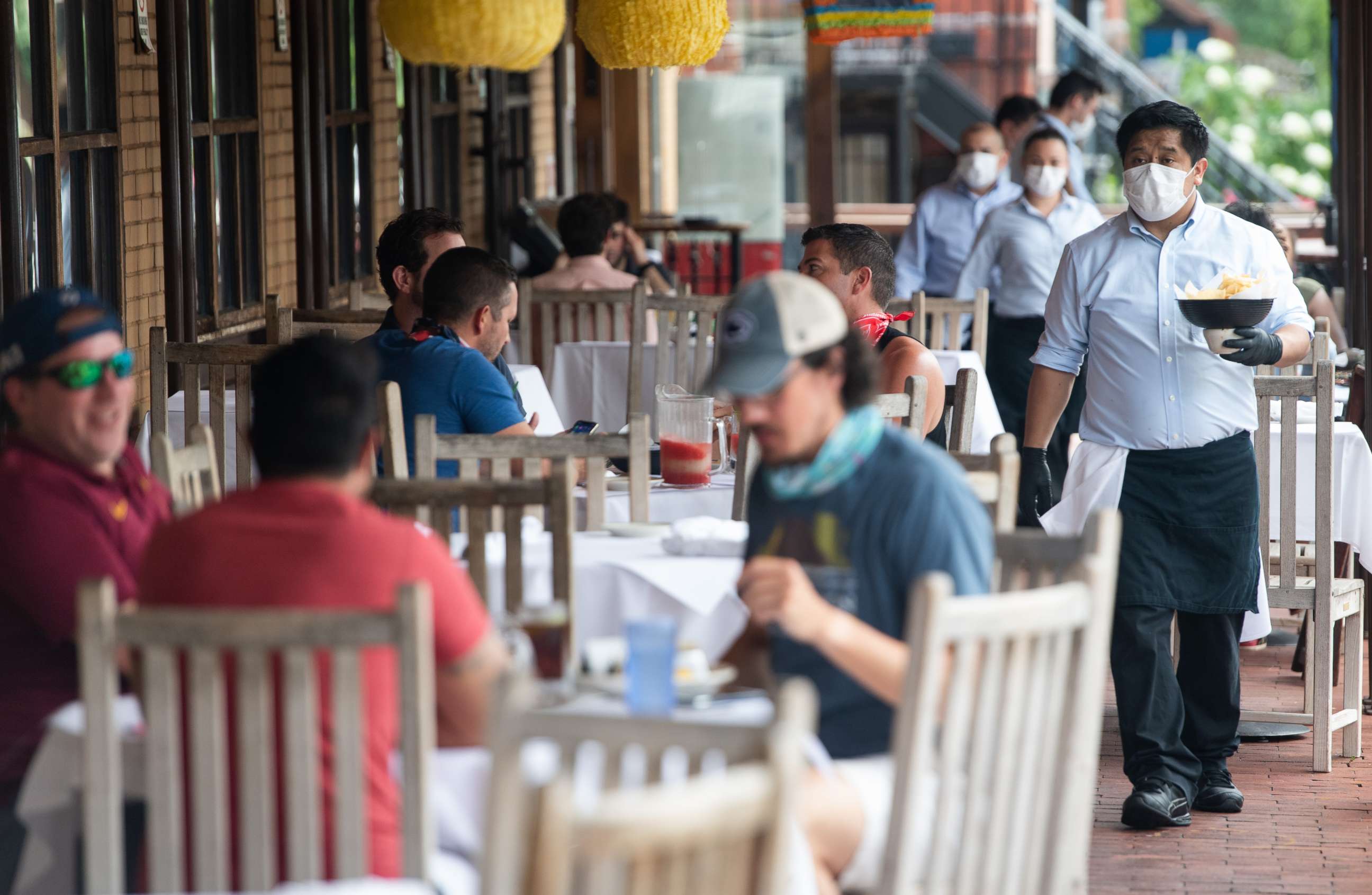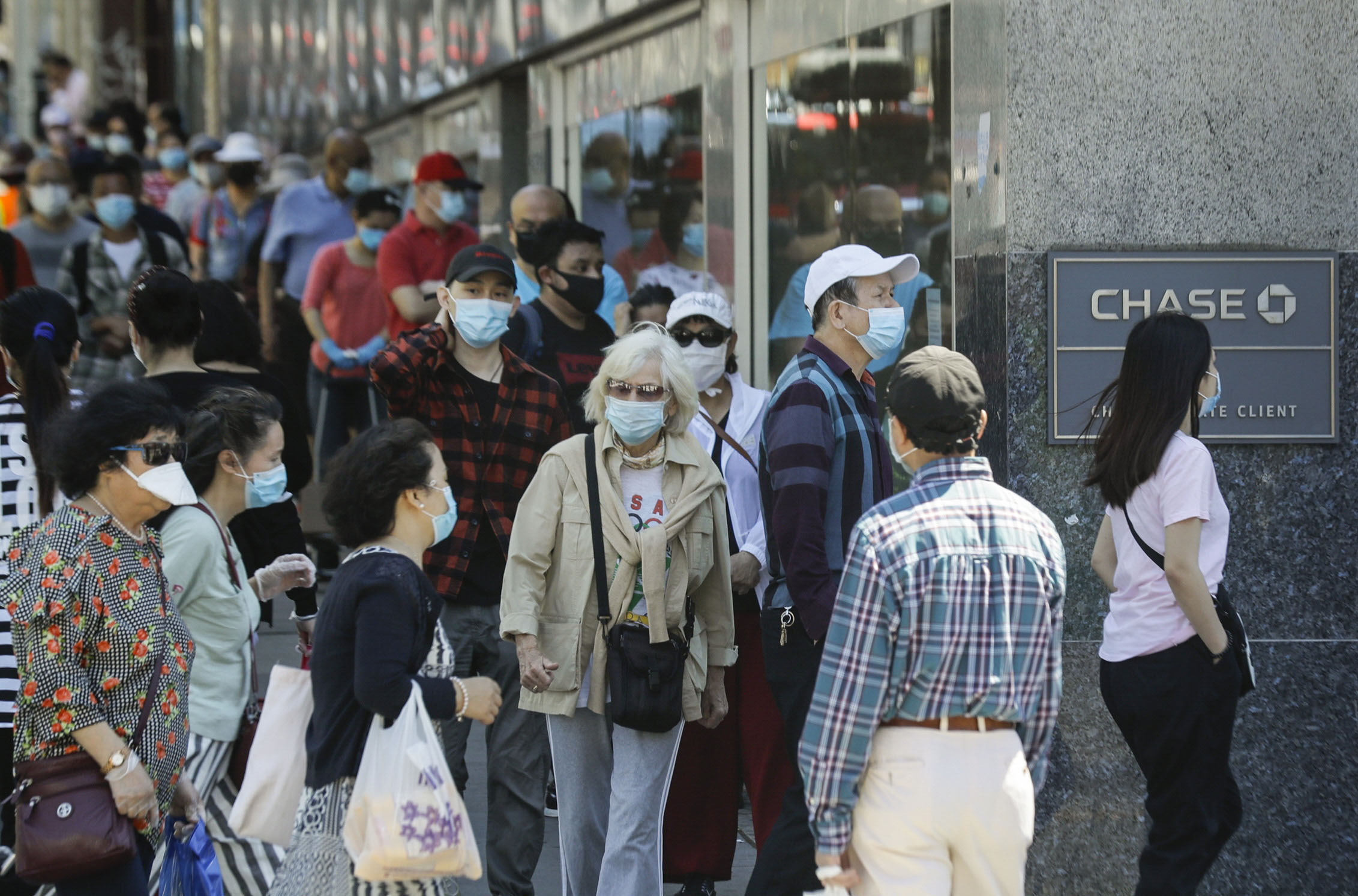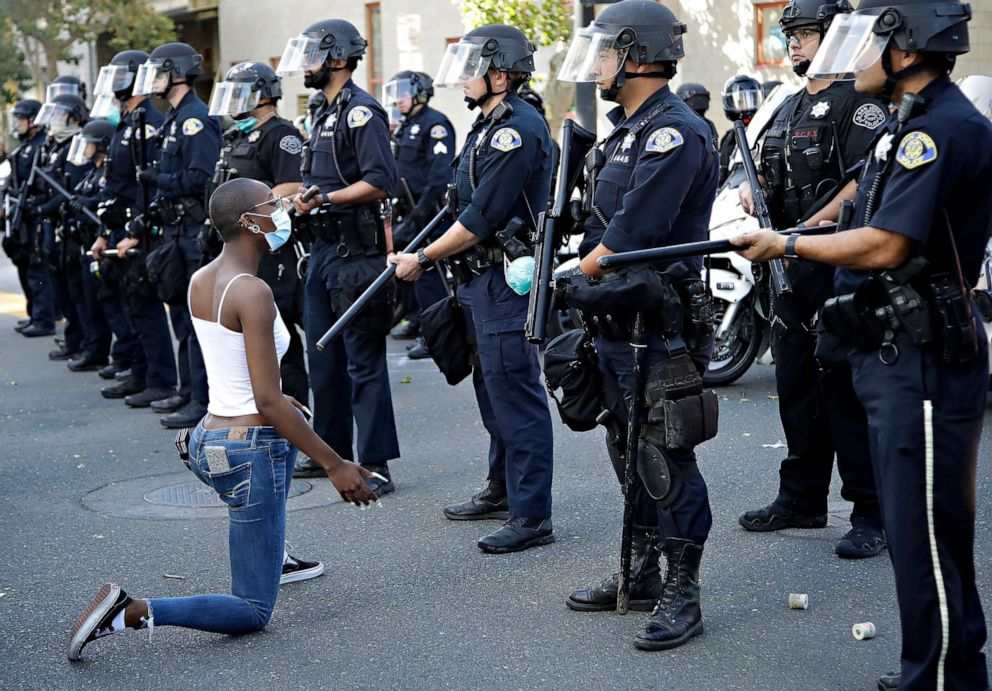CDC recommends face masks, asks Americans to evaluate risk of summer events
CDC says Americans should continue to practice social distancing this summer.
The country's top public health agency wants Americans to continue to practice social distancing, hand-washing, and wear face coverings or masks going into the summer as more states reopen businesses and lift stay-at-home orders to allow people to gather with family or friends.
The new guidance from the Centers for Disease Control and Prevention comes amid large protests and a week ahead of President Donald Trump's first political rally in months as CDC and public health experts say large indoor events are risky.
Officials from the CDC say they know Americans are itching to get out of the house this summer but that individuals and families should evaluate the risk of decisions to eat at a restaurant, go back to the gym, or host an event, saying that while the curve of COVID-19 cases has flattened, the threat of the virus remains.
CDC issued new guidelines Friday laying out how Americans can decide if activities like eating at a restaurant, going to a nail salon, hosting a family cookout or attending a large event are too risky. The CDC guidelines recommend considering how many people will be at an event, if it's indoors or outside, if everyone will be wearing masks including staff, and if there's enough sanitization supplies available before deciding to attend.

"We recognize that we're all getting tired of staying at home. People long for the live that they had back in December. And as we head into the summer months, we know that Americans will be looking forward to connecting with family and friends, and be able to attend events, and we want that to occur as safely as possible," CDC's Deputy Director of Infectious Diseases and COVID-19 Response Incident Manager Jay Butler said on a call with reporters.
Between parties over the Memorial Day weekend, large protests in the wake of George Floyd's death, and President Donald Trump's plan to resume campaign rallies health experts have raised concerns about a possible surge in COVID-19 cases.
When asked specifically about the fact that President Trump is resuming political rallies that won't require masks and will include crowds in indoor spaces CDC denied the guidelines aren't meant to endorse any specific type of event.
"The guidelines is really for any type of gathering whether it's the backyard barbecue or something larger, and it's not intended to endorse any particular type of event, but to be able to be applicable to any type of event that may occur. So the most important things are some of those issues related to be unable to maintain consistency, having access to hand hygiene, encouraging face covering. And of course, not attending events, if you are ill or have recently been exposed to COVID-19," Butler said.

CDC officials emphasized that the pandemic isn't over and though the U.S. isn't seeing as many new cases they'd like to keep it that way before a potential second wave in the fall.
"It's important that we remember that the situation is unprecedented and the pandemic has not ended," CDC director Robert R. Redfield told reporters.
And Butler added "we are not out of the woods yet."
The CDC said that nationwide curve is "flattened" but said there are increases in some areas, which are being monitored closely. They said that although some of the increases might be explained by relaxed stay-at-home orders, there is no one single answer explaining why case counts are going up in some places. Some of the upticks might be explained by more aggressive surveillance and testing in areas prone to outbreaks like prisons, nursing homes and meat packing plants.
"No one answer to your question that is going to apply everywhere," Butler said.

For now, officials said new cases are at a plateau nationwide but the country could see a rise in cases.
Redfield said "it is too soon to tell if this will happen."
Butler encouraged Americans to get a flu shot moving into the fall to mitigate the risk of additional deaths as we grapple with two viral illnesses at once.
Butler said the guidelines are meant to keep the curve flat for as long as possible and delay the onset of cases to prevent overwhelming hospitals and "increasing the chances there will be people who would benefit from vaccination if they can avoid becoming infected before a vaccine is available."



